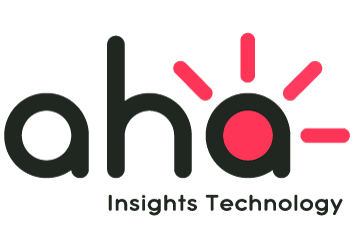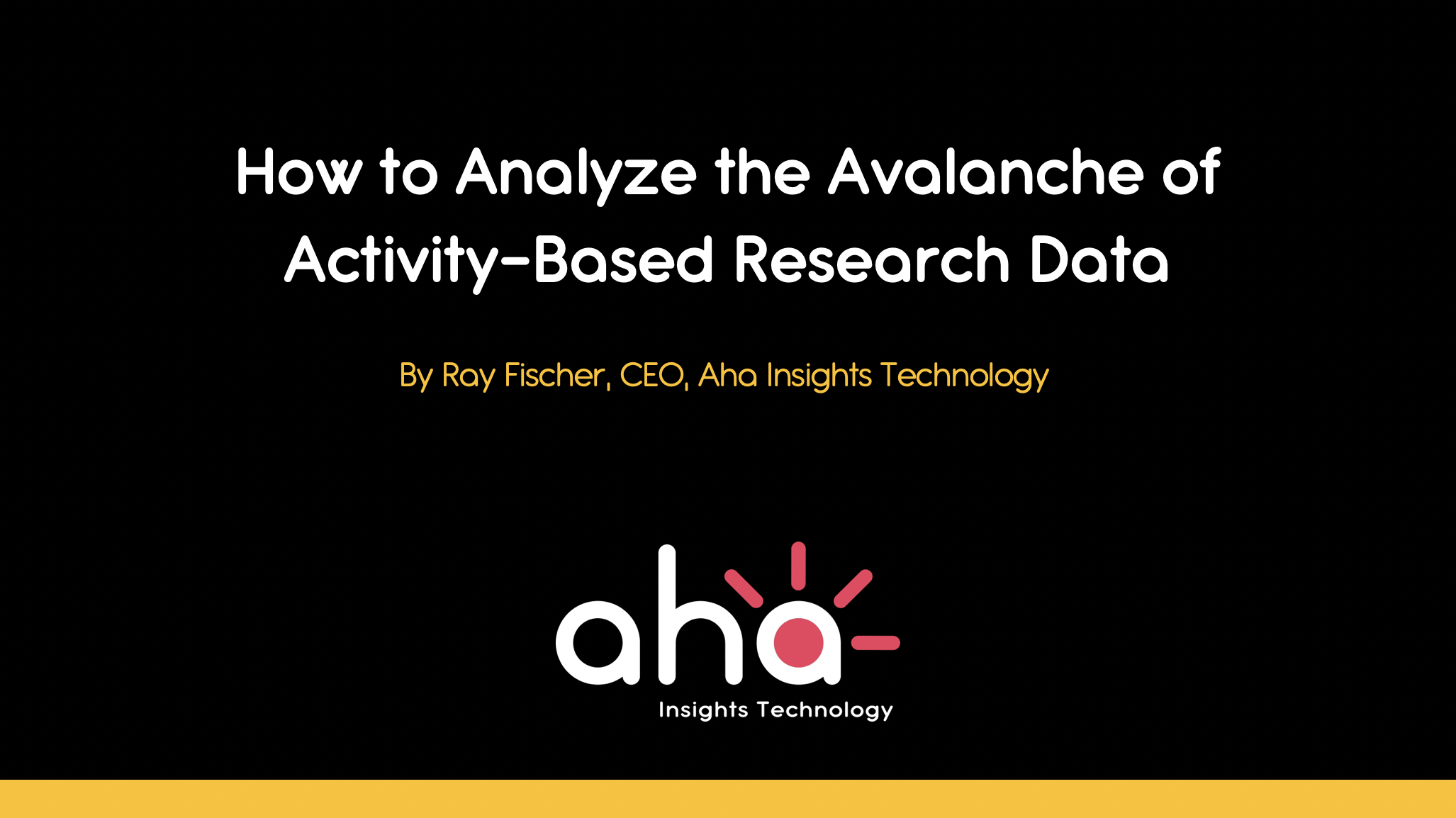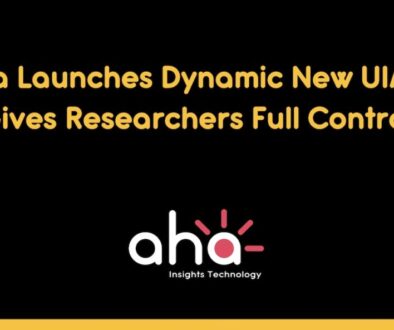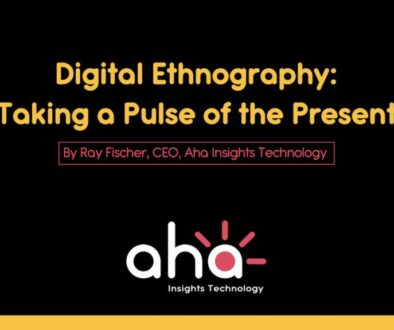How to Analyze an Avalanche of Activity-Based Research Data
The initial excitement of all the data you get from an activity-based consumer or B2B research study makes you border on giddy. You’ve never gotten this much depth, texture, or context. You’ve never seen numbers or results coupled with the whys that give you such rich insight. And then…well…the data keeps coming. That feeling of giddiness is suddenly replaced with a fear that perhaps you’re about to get buried by the avalanche of unstructured data.
In my experience, analysis is fundamentally about organization. So, we’ve built a ton of that into our aha ResTech platform Yes, there’s a lot of data rushing by but Aha! gives you several ways to reach out and grab what’s most important for you.
The aha process for managing the data
Let’s start with filtering. This can be done by question, segment, demographic, or even individual study participants. I recommend starting your analysis with a specific question that will give you an immediate sense of an emotion, sentiment or perspective that has an important impact on what you’re trying to learn in the study. You can filter for this one question and even add several filters to look at it by segment or demographics, giving you a way to compare responses or feelings. This process will give you an instant sense of focus and a cue on where to go next in your analysis.
Then start tagging. As you begin to read responses, use the tagging and notes functions to organize and annotate the meaningful data. You can use tagging to instantly start developing themes. If you’re reading through responses and get a sense of a specific emotion emerging, you can identify that theme as a tag. You can add tags as you progress through the data or use the ones you’ve already developed. Of note, you can apply multiple tags to a specific response. All this tagged data is then organized in a clean, ready-to-use way in the Analytics area of aha. Now you can quickly look at all this unstructured data in a structured, analytical way. It also gives you a wealth of quotes to use in your analysis deck.
Additionally, you can drag and drop your tags to re-organize your emerging themes any way you see fit. These tags set you up perfectly to efficiently move your multi-media insights and supporting stimuli straight to your report.
Along the way you can write analytical notes. While tagging, write analytical notes to yourself. Let’s say you notice something emerging and want to record your in-moment thoughts, observations, or interpretation. The aha notes feature allows you to keep that thought in line with the data that it pertains to. The Notes are also recorded in the Analytics area of aha insight technology! and can be used as key insights or support for your analysis deck.
Speaking of words… Aha! will automatically help you figure out the vocabulary that’s driving perceptions in your study. It will generate customized word clouds within any specific filtered context you want to create. So, this isn’t just a cool picture of words…it’s an analytical tool that can help you better understand the way different people in your study might express an emotion or an opinion. It will do word counts and tell you how often and who was using this vocabulary in the study. The drill-down specificity of this is a handy analytical tool that—once again—replaces what can appear as an avalanche of data with strategic organization.
And a few charts never hurt. One of the other automated functions within aha is the creation of charts for closed-end questions. These can quickly reveal the appeal of a concept or simply provide instant insight into a perception. You can control the inputs, but these populate without you having to comb through the answers to each question. Charts can be dropped into an analysis deck straight from the platform. I like to use these to illustrate and reinforce strategic findings.
Composite collages & maps are a lifesaver. Many people like to use collages or other projective techniques in a study but find the analysis overwhelming. Who wants to take the time to go through dozens of collages or image selections to figure out image counts, themes, and perceptions? So, to make things more automated, we’ve developed an analytical tool that allows you to see a composite of collages, imagery uploads, and other projective techniques. The composite gives you a sense of the words and imagery that are used most often. Once again, these can also be filtered in any way you desire (segment/demo). This tool is used regularly to quickly get a sense of the emotional impact of an idea or the transformation that someone might experience with a new product in an in-home use test.
Analysis is often the hardest part of doing a study. Nobody likes the chaos and difficulty of knowing where to start unpacking everything you’ve accumulated through your activity-based approach. I understand these feelings well and that’s why we have built so much analytical power into our platform. I’ve had a lot of clients tell me these tools have made analysis so much smoother and helped them turn creative Activities into more insightful, actionable Analysis.
The combination of Activities + Analysis will deliver your aha moments without the avalanche.
If you haven’t tried our tools yet, reach out and we’ll give you a live tour of the aha advantages.





